Over the course of 48 hours in May 1946, a group of Alcatraz inmates overpowered the guards and stole their guns — then unsuccessfully tried to shoot their way out of the prison.
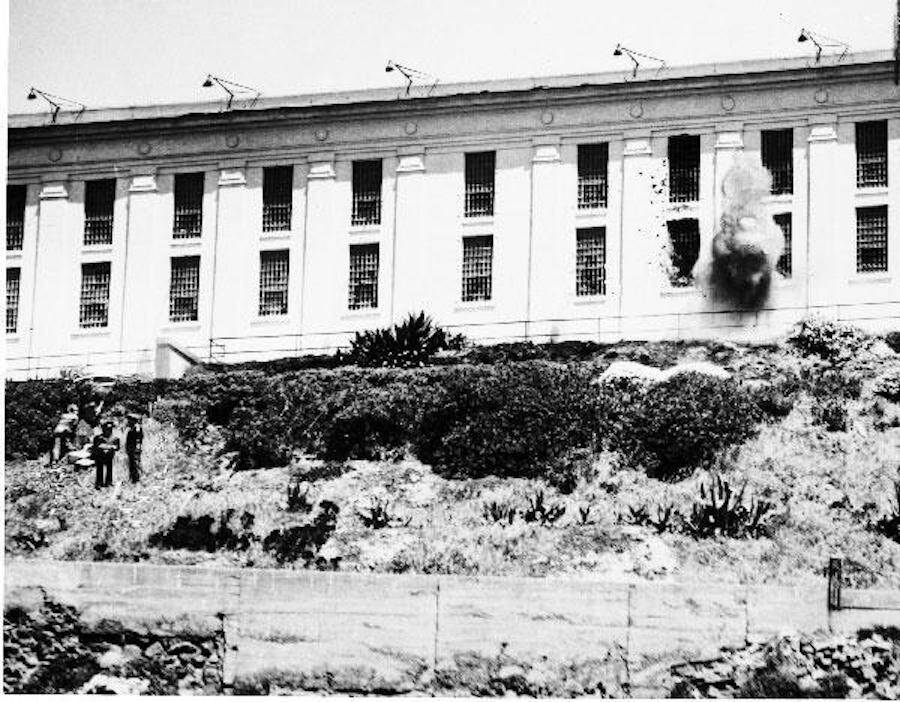
Wikimedia CommonsThe Alcatraz cell house being shelled by mortars during the Battle of Alcatraz.
In 1946, Alcatraz, the infamous prison island in San Francisco Bay, became the site of a bloody uprising that would later be known as the Battle of Alcatraz. What began as an ambitious escape attempt quickly turned into the most violent standoff ever seen in the prison’s history.
For two days, prison guards and armed convicts clashed inside the prison’s cell block. Gunfire echoed through the halls, and explosions rocked the building. In the end, two prison guards were killed — one of whom was accidentally hit by friendly fire. At least 14 guards were injured.
As for the would-be prison escapees, three of them lay dead by the end of the Battle of Alcatraz. Two surviving inmates were later executed for their roles in the riot. The escape attempt had failed, but it was never forgotten.
The Alcatraz Prisoners Who Plotted The 1946 Escape Attempt
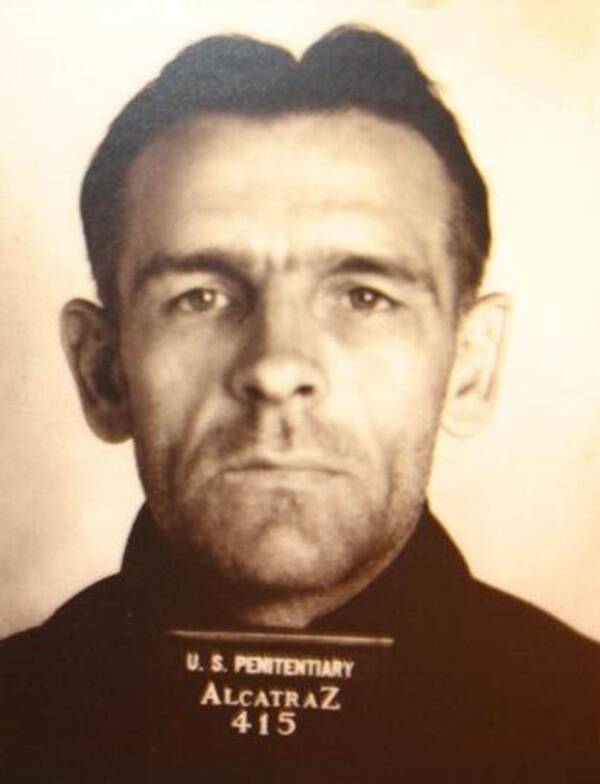
Find A GraveInmate Bernard Coy was the leader of the failed 1946 Alcatraz escape attempt.
In May 1946, a group of six inmates at Alcatraz, led by bank robber Bernard Coy, made a bold attempt to escape the prison. Coy, sent to the island in 1938 after robbing banks during the Great Depression, worked as a cell-house orderly. As a cell-house orderly, Coy had more freedom to move around than other prisoners, which he used to plan the breakout carefully.
Coy came up with a unique strategy — he started losing weight so he could squeeze through the bars of a gun gallery and steal the weapons. He knew that if he could get into that gallery, he could change the balance of power in the prison. So he dropped 20 pounds to make that happen.
But he wasn’t working alone. Coy teamed up with Marvin Hubbard, Joseph Cretzer, and Clarence Carnes. Cretzer, a West Coast gangster, was locked up for murder and had already attempted to break out of Alcatraz. Carnes, the youngest inmate on the island, was just 18 when he was sent to the prison in 1945. He was also serving time for murder, along with kidnapping.
As the plan got underway, two more Alcatraz inmates, Sam Shockley and Miran Thompson, joined in. Though they hadn’t been part of the original plot, they saw the attempted breakout unfolding and took their chance to flee.
How The Violent Battle Of Alcatraz Began
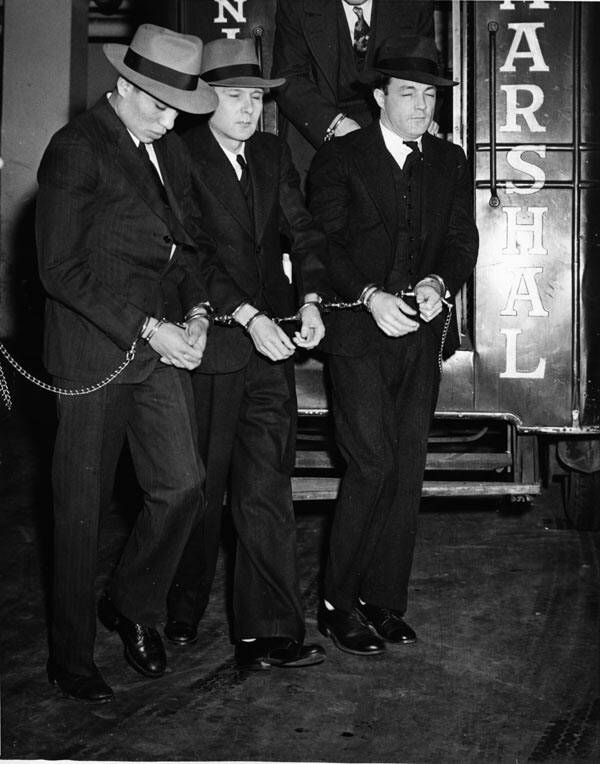
Wikimedia CommonsClarence Carnes, Sam Shockley, and Miran Thompson were all involved in the escape attempt in the Battle of Alcatraz.
On May 2, 1946, Bernard Coy prepared to put his plan into action, positioning himself near co-conspirator Marvin Hubbard’s cell. Hubbard then reportedly began distracting a prison guard named Bill Miller, asking Miller if he could be let back into his cell after completing his kitchen duties.
While Miller was either frisking Hubbard for stolen goods or opening Hubbard’s cell door, Coy took that opportunity to attack Miller from behind. Before long, Hubbard had joined Coy in beating Miller, and together, they overpowered the guard. After Miller was unconscious, Coy stole Miller’s keys.
Coy then used the keys to free Carnes, Cretzer, and Thompson from their cells. And when another prison guard approached the area, Coy strangled him with his own necktie, leaving yet another authority figure unconscious.
Of course, the real game-changer for Coy’s escape plan was gaining access to the gun gallery, which he’d been examining for weeks. With the help of pliers and pipes, Coy spread the bars far enough apart so he’d be able to fit through the gap. His weight loss, coupled with the fact that he’d covered himself in axle grease, meant that he was able to slip into the gallery.
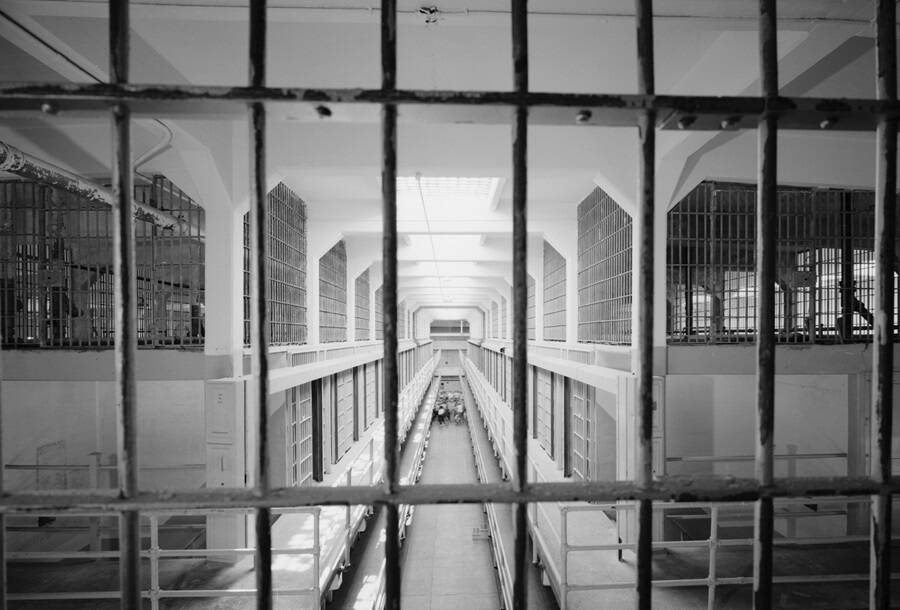
Library of CongressA view from the inside of Alcatraz Prison.
Once Coy was inside the gun gallery — and two guards were totally incapacitated — he was able to seize numerous weapons for himself and his co-conspirators. Armed and emboldened, the group of inmates now had the tools that they needed to escalate their escape attempt.
Coy’s next move was to force Officer Cecil Corwin to open the door to another part of the prison. With that door unlocked, the co-conspirators freed more inmates, including Shockley, who quickly joined the escape effort. However, not all inmates wanted to be involved. While many potential escapees soon returned to their cells, Coy’s crew had other plans in mind.
The group hoped to open the cell door to the recreation yard, granting them easier access to the rest of the island, and then use the guards as hostages to negotiate their way on a boat off of Alcatraz Island. By that point, they had nine guards locked in cells as hostages. But their biggest challenge was yet to come — finding the key that would lead to their freedom.
The Intense Standoff At The Battle Of Alcatraz That Led To Bloodshed
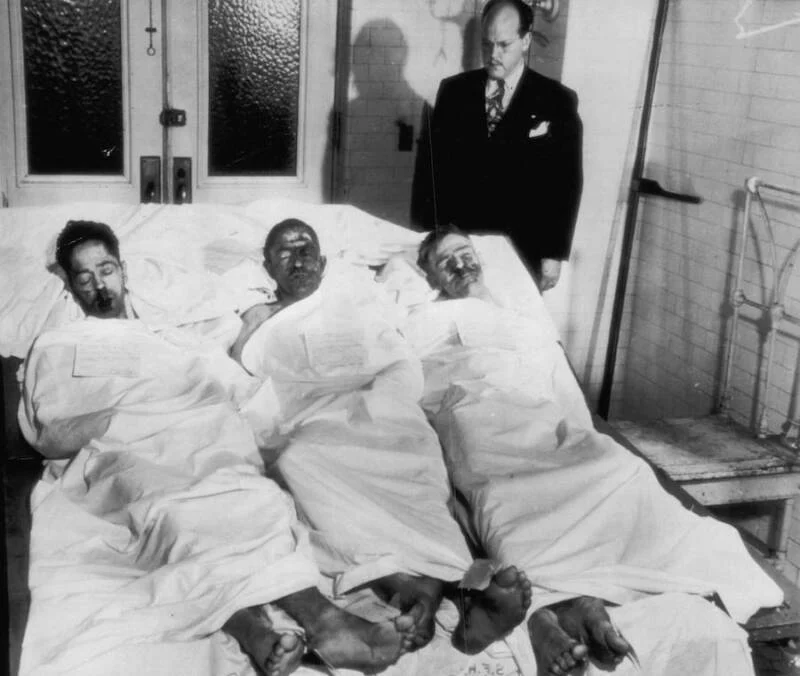
AP Wirephoto/SuperStock/Alamy Stock PhotoThe bodies of Joseph Cretzer, Marvin Hubbard, and Bernard Coy, who all died during the Battle of Alcatraz.
As Bernard Coy and the others searched the keys for one that would unlock the cell door to the recreation yard, they became increasingly frustrated. None of the keys seemed to work. Little did they know, the captured guard Bill Miller was still in possession of that key — and he had hidden it.
Without the key, the prisoners’ escape route was essentially blocked, and as time went on, they became increasingly desperate to find any way out. Frustrated by the delay, Joseph Cretzer began firing into a cell where the guards were held, wounding several of them and fatally injuring Miller.
Meanwhile, the would-be escapees had another problem — the noise of the prison’s emergency siren. By the early afternoon, it was clear to authorities that inmates were trying to escape, and it was soon clear to many residents of San Francisco as well. The siren was so loud that thousands of locals gathered by the waterfront to watch the Battle of Alcatraz unfold.
Witnesses were greeted by an increasingly violent spectacle. As the prisoners realized that they were running out of options, they fatefully decided to shoot their way out, even targeting the guards in watchtowers. Though armed officers fought back, they struggled against the inmates who had stolen seemingly endless weapons and ammunition. Eventually, the Alcatraz warden called in the U.S. Marines to restore order to the prison.
According to Military.com, the Marines in question had recently returned from fighting in World War II, and they used tactics that they’d learned battling the Japanese on various islands in the Pacific Theater.
Joining prison guards, police officers, and members of the Coast Guard, the Marines wielded grenades and fired machine guns at the inmates, eventually forcing them into areas of the prison where they’d have little room to move. Even with these intense efforts to retake the prison, the fighting raged on for almost 48 hours until authorities finally regained full control of Alcatraz.
In the end, Coy, Cretzer, and Hubbard were killed, unable to withstand the relentless attacks. Coy was found in a guard’s uniform, in an apparent last-ditch effort to disguise himself and escape. The Battle of Alcatraz was over.
The Aftermath Of The Battle Of Alcatraz
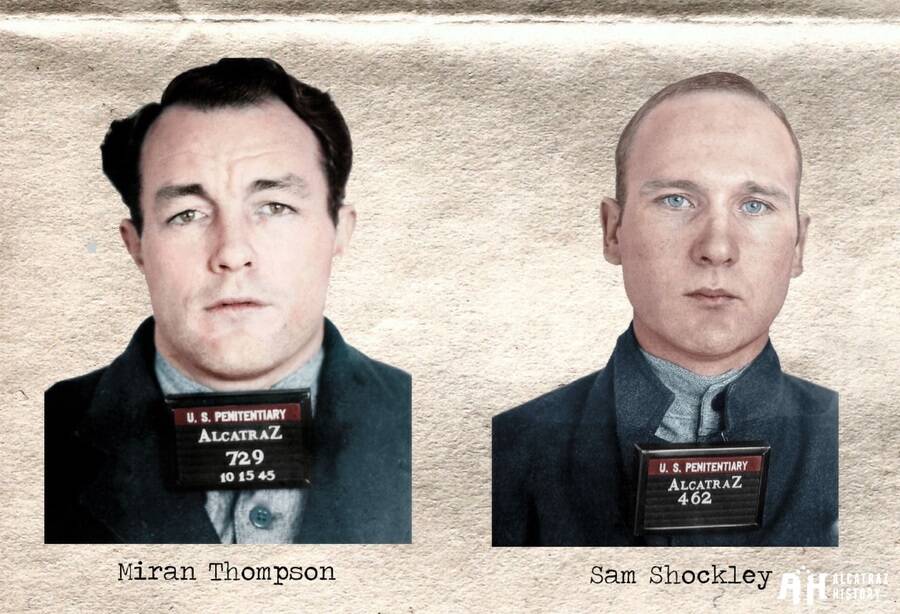
Alcatraz History/FacebookMiran Thompson and Sam Shockley were executed side-by-side in San Quentin’s gas chamber in 1948.
Throughout the entire history of Alcatraz, there were 14 separate escape attempts made by prisoners, including the shocking 1962 incident that saw three inmates successfully flee the prison — to uncertain fates. However, the 1946 incident was the bloodiest, cementing its place in infamy forever.
Though the escape attempt had been unsuccessful and ended with the deaths of three would-be escapees, it also left two guards dead. Harold P. Stites was accidentally killed by friendly fire, and Miller died from his injuries after being shot by Cretzer. At least 14 other guards were wounded.
According to Jim Quillen, one of the convicts caught in the crossfire, the death count could have been worse. The former robber, who was later released and received a presidential pardon, claimed that the guards hurled grenades recklessly, determined to take out as many inmates as they could.
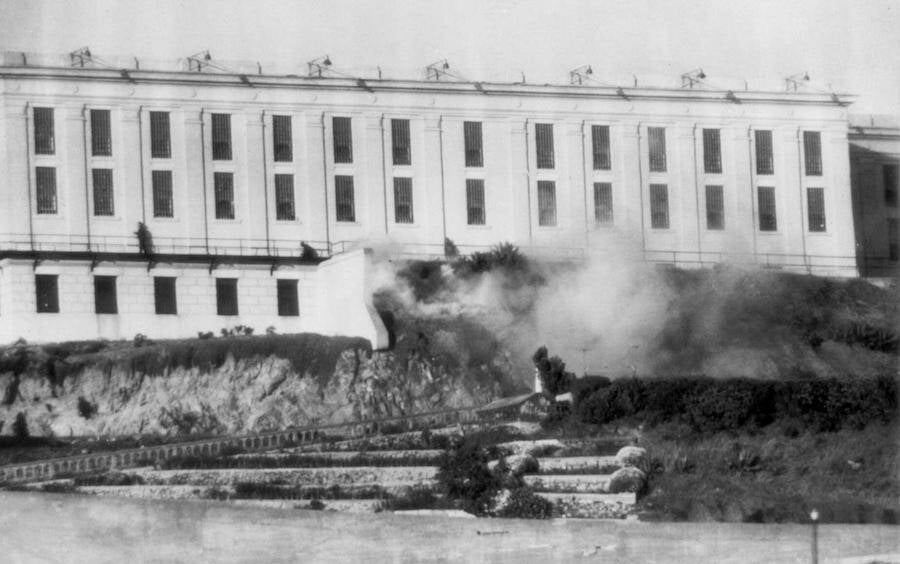
AP Wirephoto/SuperStock/Alamy Stock PhotoGuards preparing to fire during the Battle of Alcatraz.
“A voice would call out, asking for a certain individual and demanding that we surrender the rifle. It didn’t take us long to realize that answering only served to bring down a full-scale assault on the speaker,” Quillen said. He also recalled a terrifying moment when the cell next to his took a direct hit from a grenade: “The explosion rocked the entire tier, fire belched from his cell and the walls bowed. We were overwhelmed with fear.”
Even after the Battle of Alcatraz ended, there were more deaths to come. Thompson and Shockley were executed side-by-side in San Quentin’s gas chamber on December 3, 1948 for their roles in the murder of Miller.
Carnes, however, was spared execution after it was determined that he had tried to stop the killing of guards. He had 99 years added to his sentence and remained at Alcatraz until the prison’s closure in 1963. Carnes was then transferred to a different prison and paroled in 1973. But his freedom didn’t last — he violated parole and was locked up again. He died at age 61 in 1988.
While Alcatraz is now a tourist attraction open to visitors, the physical aftermath of the Battle of Alcatraz can still be seen at the site today. Visitors have recalled seeing the bullet holes in the floors and the walls, a permanent reminder of the violence that had occurred there. Indeed, it’s clear that the events of those two days in 1946 will never be forgotten.
After reading about the Battle of Alcatraz, discover the story of Frank Morris, the mastermind behind the 1962 Alcatraz escape. Then, read about when Native American demonstrators occupied Alcatraz Island.





